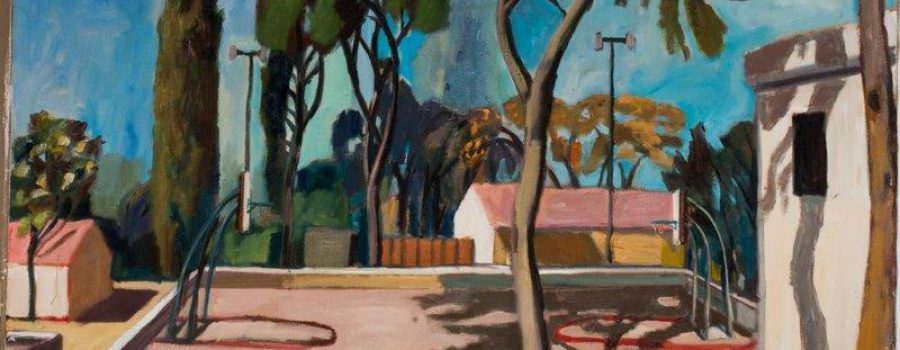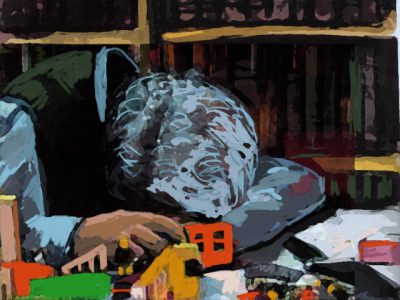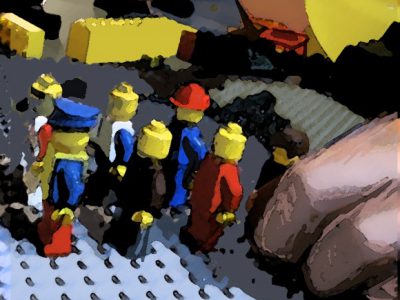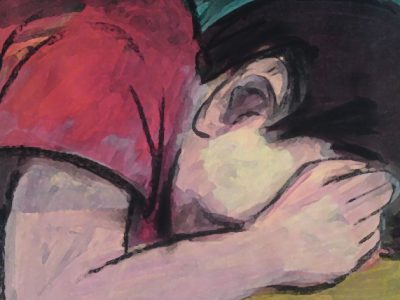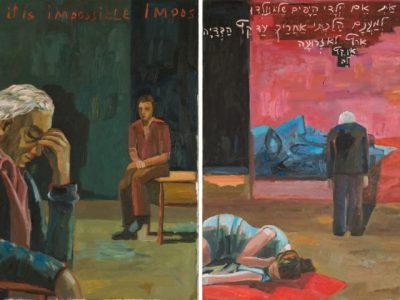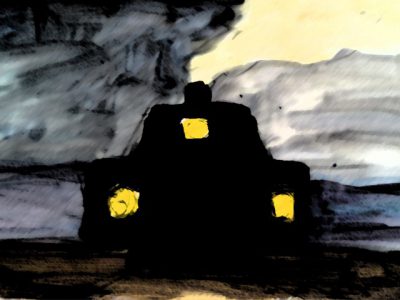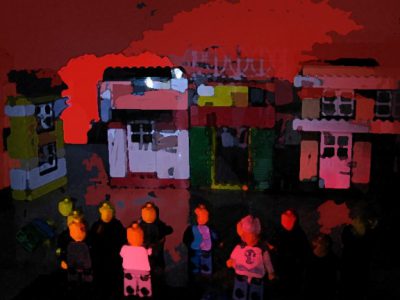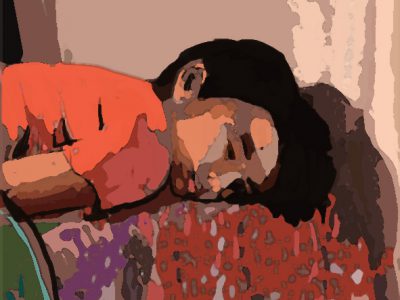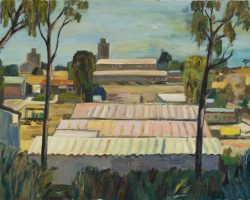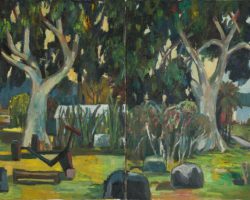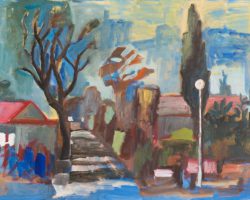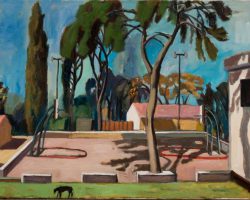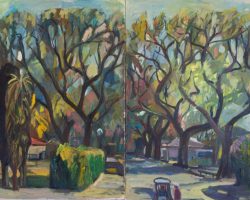Michael Kovner
Gazing at Parallel Streams
Curator: Dr. Galia Bar-Or
June 15, 2020 Until March 13, 2021
Ezekiel
Ezekiel is an amalgam of the real and imagined traits of my father, Abba Kovner, a resistance fighter, a partisan, a poet, and an historian. Each of us had been preoccupied with his own inner world, and the conversation we both wanted failed to take place. This conversation is in a way conducted in this auto-fictional book, Ezekiel, and at the Bochum exhibition which follows the book.
The main part of the exhibition is composed of paintings and digital images which are included in my book - presented at the entrance. Ezekiel, a former partisan (as my father), leaves the kibbutz (unlike my father) and we see him alone in his Jerusalem apartment. He falls accidently in the shower room and while lying on the floor he re-experience images of his troubling past.
